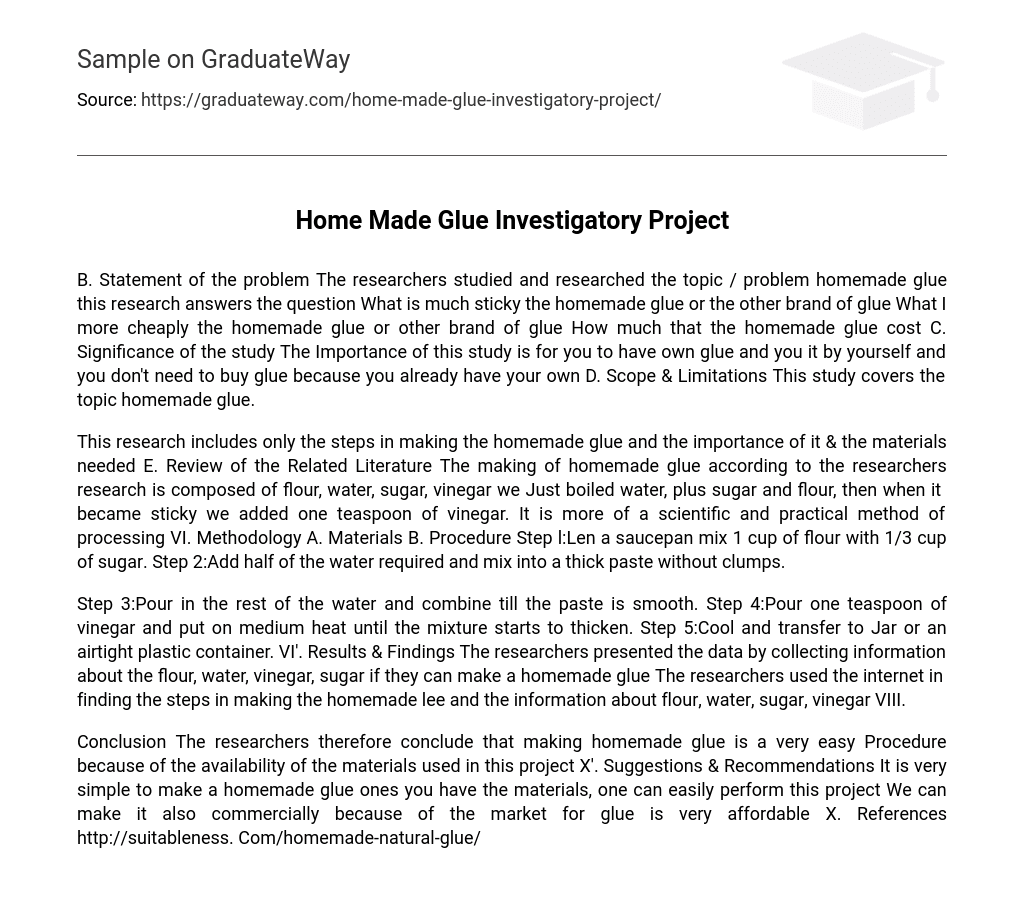The study focused on homemade glue and its stickiness and cost-effectiveness compared to other glue brands. It aimed to assess the advantages of making one’s own glue rather than buying it, while also considering the limitations of homemade glue.
The main focus of this study is the process of creating homemade glue and its significance. The researchers’ findings indicate that to make this glue, you will need flour, water, sugar, and vinegar. To create the glue, first boil water and sugar together, then add flour. Once the mixture becomes sticky, add one teaspoon of vinegar. This method of making glue is both scientific and practical.
In terms of methodology, the research used specific materials and followed a step-by-step procedure. Initially, combine 1 cup of flour with 1/3 cup of sugar in a saucepan. Then add half of the required amount of water and mix thoroughly until it forms a clump-free thick paste.
Step 3: Stir the remaining water until the paste becomes smooth.
Step 4: Heat on medium heat until the mixture thickens. Incorporate one teaspoon of vinegar.
Step 5: Once cooled, transfer the mixture to a jar or airtight plastic container.
VIII. Results & Findings: The researchers obtained information regarding the necessary ingredients (flour, water, vinegar, and sugar) for creating homemade glue. They utilized the internet to discover the steps involved in making homemade glue and gather data about these ingredients.
In conclusion, the researchers discovered that making homemade glue can be easily achieved if you have all the necessary materials. It is recommended to gather all the required materials beforehand in order to embark on this simple project. Additionally, considering the affordability of glue in the market, it could also be produced commercially.
For more information, please refer to http://suitableness.com/homemade-natural-glue/.





